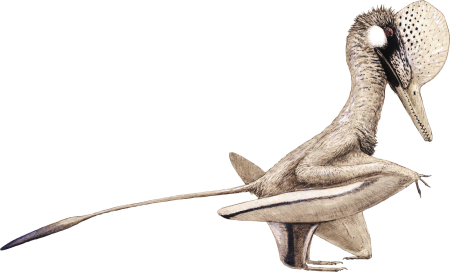Dragonets
Basic Information
Anatomy
Growth Rate & Stages
Ecology and Habitats
Additional Information
Domestication
Geographic Origin and Distribution
For Player Characters:
A Character with the Animal Companion feature may take a Dimorphodon (also appropriate for small pterosaurs such as Wukongopterus, Darwinopterus, or Pterodactylus), Pteranodon (also appropriate for large oceanic pterosaurs such as Nyctosaurus, Ornithocheirus, or Cearadactylus), or Queztacoatlus (also appropriate for predatory land-dwelling pterosaurs such as Hatzegopterus, Tupuxuara, or Istiodactylus) as an Animal Companion. A Character with the Familiar class feature may take a Rhamphorhynchus (also appropriate for very small pterosaurs such as Sordes or Carniodactylus) familiar, or take an Anurognathus familiar, using the statistics for bat familiars.
The following feat is meant for a character wishing to use a Dragonet companion:
Master of Dragons
Your upbringing in traditional human culture means that the dragonets you train are stronger and faster than usual.
Prerequisites: Handle Animal 1 rank, Animal Companion or Familiar class feature, Human or Native to Godless Munavri, Tannica, or Celadine
Benefit: You gain a +2 bonus on Handle Animal skill checks when dealing with any species of Dragonets , and a +2 bonus on Diplomacy skill checks to improve the attitude of any creature with the Dragon type.
In addition, choose one of the following types of Pterosaur: Anurognathus (use bat statistics), Rhamphorhynchus, Dimorphodon, Queztalcoatlus, or Pteranodon. Any of your animal companions or familiars of that type gains a +2 to one physical ability score of your choice.
Normal: Humans don't gain any special bonuses for various types of companion.
Remove these ads. Join the Worldbuilders Guild












Comments